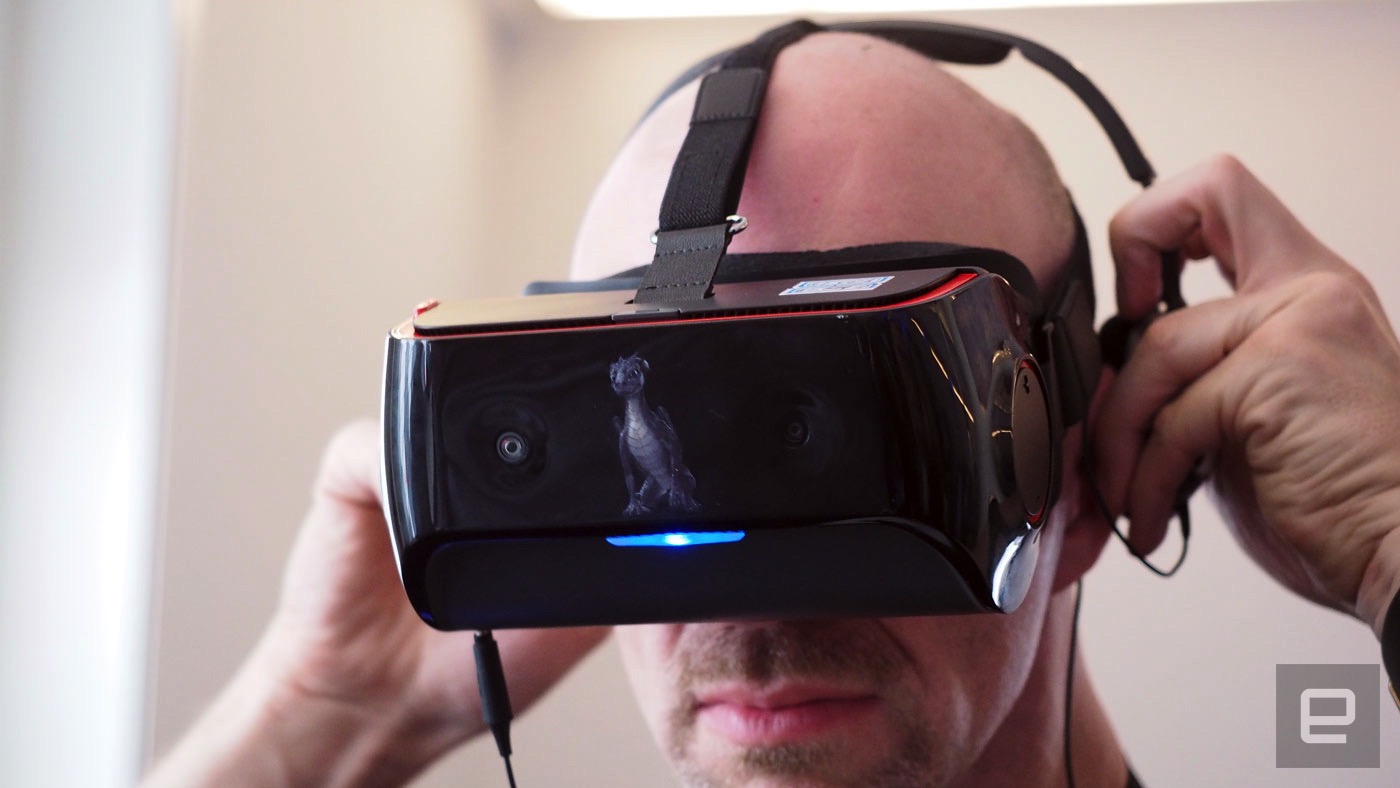
Earlier today AMD's director of global business units marketing, John Taylor, joined us on our CES stage to talk chips. Specifically, tablet chips, and laptop chips, and chips for products that have elements of both. While he was up there, Mr. Taylor flashed a reference device -- a laptop hybrid with the keyboard and touchpad built into the carrying case. Obviously, we weren't satisfied with just a quick tease, so we caught up with him afterward to learn a bit more. As it turns out, it runs a quad-core version of AMD's new Temash chip, which is being billed as the first quad-core, x86-based SoC. (There's also a dual-core version.) Built into the chip is an HD Radeon 8000 series GPU with AMD's Graphics Core Next architecture, so in theory you should be able to pull off PC-caliber gaming even on a tablet.
All told, it promises 50 percent more performance than AMD's Hondo processor, which you can find in Vizio's new Windows 8 tablet. Of course, those are just marketing claims, and besides we haven't had a chance to benchmark either a Hondo or a Temash system yet. So, to put that in better context, it might be helpful to hear AMD talk about its competitors. Obviously, Intel is a biggie, but in particular AMD says Temash should be able to compete with Clover Trail tablet chips, going all the way up to Core i3 on laptops. We're told Temash will ship sometime in the first half of this year, and that AMD will be revealing more details about the platform at Mobile World Congress, which kicks off in late February. Until then, we've got hands-on photos of the unit below, along with some performance impressions after the break.
Continue reading AMD shows off a reference device with a quad-core, x86-based Temash chip
Filed under: Laptops, Tablets, AMD
Comments
 When it comes to adding a voice assistant to a speaker or a pair of headphones, Amazon's Alexa has become the default choice for many OEMs, likely due to the openness and high adoption rate of the platform. Never one to miss a money-making opportunit...
When it comes to adding a voice assistant to a speaker or a pair of headphones, Amazon's Alexa has become the default choice for many OEMs, likely due to the openness and high adoption rate of the platform. Never one to miss a money-making opportunit...
 When it comes to adding a voice assistant to a speaker or a pair of headphones, Amazon's Alexa has become the default choice for many OEMs, likely due to the openness and high adoption rate of the platform. Never one to miss a money-making opportunit...
When it comes to adding a voice assistant to a speaker or a pair of headphones, Amazon's Alexa has become the default choice for many OEMs, likely due to the openness and high adoption rate of the platform. Never one to miss a money-making opportunit...
 At a quiet, barely-attended press conference on the far side of Berlin, Qualcomm revealed its plan to get the cost of VR headsets to plummet. The company has been working on a series of reference designs that encompass plenty of smart home gadgets, a...
At a quiet, barely-attended press conference on the far side of Berlin, Qualcomm revealed its plan to get the cost of VR headsets to plummet. The company has been working on a series of reference designs that encompass plenty of smart home gadgets, a...
 Just as all eyes are on Qualcomm's next move after its recent realignment, the company threw a surprise by announcing its entry into the security camera market by way of a reference design. But what for, you ask? Well, it's all about reducing the b...
Just as all eyes are on Qualcomm's next move after its recent realignment, the company threw a surprise by announcing its entry into the security camera market by way of a reference design. But what for, you ask? Well, it's all about reducing the b...





















